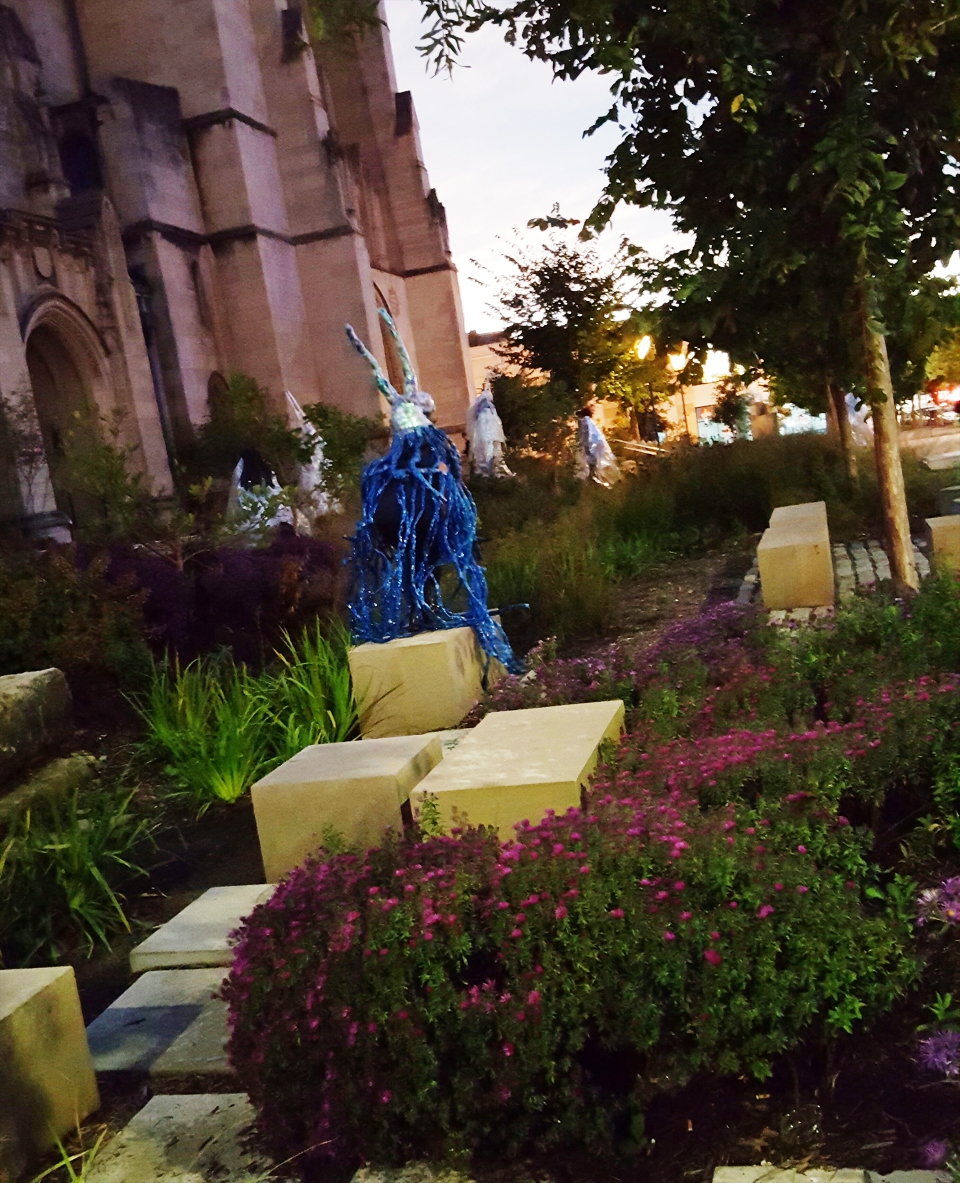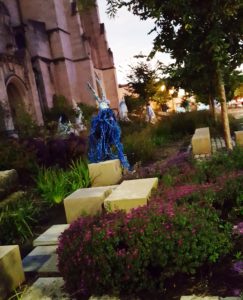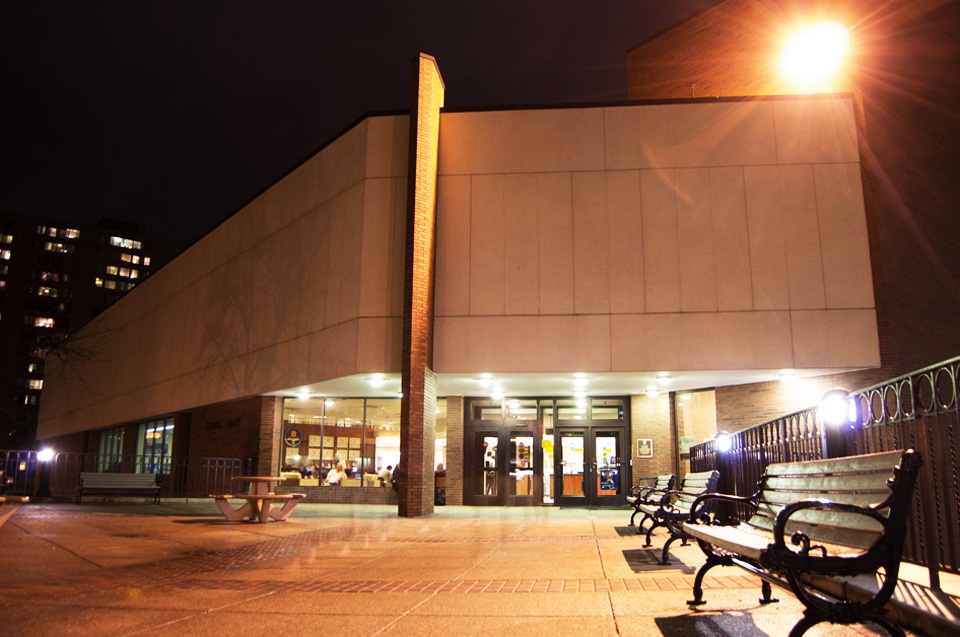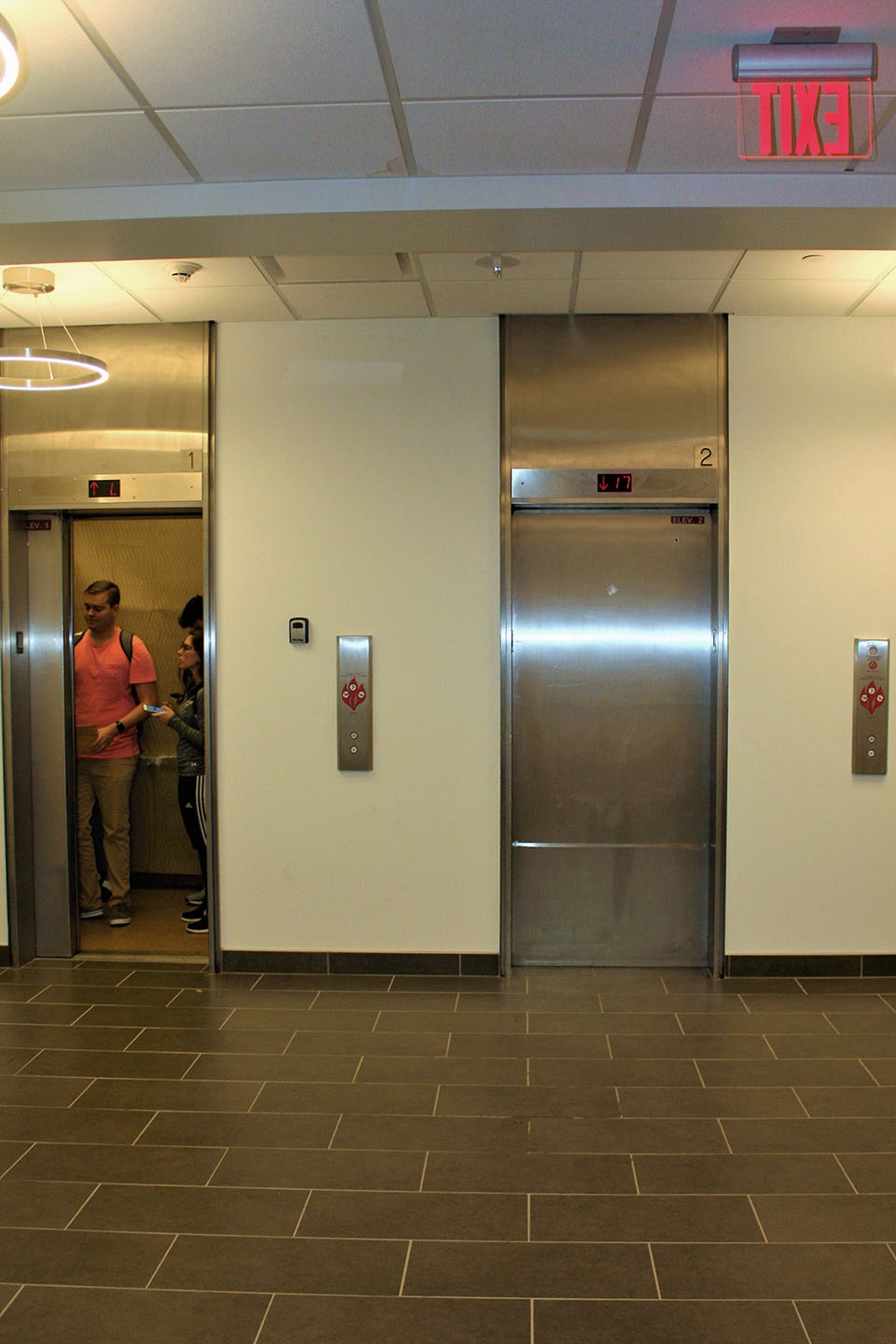

A statue stands on display at last weekend’s VIA art festival in Shadyside. In addition to the VR Saloon, the festival also featured stage shows, films and musical performances over the three day span of the event.07
By Sean Armstrong | Staff Writer
When technology and art meet in the middle, you get the VIA Festival. The festival was held in Shadyside from Oct. 6-9 and featured a wide range of events from virtual reality demos to music and various public performances.
The prescribed goal of the Virtual Reality Salon, one showcase at the festival, was to show the general public new up-and-coming virtual reality simulations and games, according to the VIA Festival website. The Virtual Reality Salon was assembled by Weird Reality, an organization dedicated to furthering VR technology and programs.
Some of the more notable virtual reality demos were “SUPERHYPERCUBE,” a new Playstation VR title that combines a Rubik’s Cube and “Tetris”; “Oops! I put on your headset,” an exploration into what happens when someone uses another person’s VR headset and “Virtual Boyfriend simulator,” a simple application that explores how easily VR can be implemented using a smart phone.
In “SUPERHYPERCUBE,” the player is tasked with fitting a flying 3D object that resembles a virtual Rubik’s cube through small geometrical holes in large panels that head toward the player. The game encourages players to compete for the highest score possible.
“Oops! I put on your headset,” by Sarah Rothberg, is meant to show the security applications that could possibly be implemented if VR ever reaches a larger everyday use. The simulation showed what it would be like to use a smartphone through a virtual reality headset.
Reminders pop up at random times during the experience, and the user has to dismiss the reminders by looking at them for an extended period of time.
In one smartphone app in the simulation, the player uses their head movement to control a fish while it goes through hoops to score points. While those are all interesting features that give the simulation a current smartphone-esque feel, the heart of the program is in the security applications that only show up at the very end. When the user opens the settings section of this program, the user has a warning that his or her VR account is being used by another headset. According to the demo description provided at the VIA Festival, the security aspect is meant to show how accounts are often hacked on cellphones and how this could be a potential problem in a virtual reality future.
The simplest — but most accessible — demo was the “Virtual Boyfriend Simulator,” which any bystander can access on their phone using a cardboard holder provided at the festival. When the application is opened, a virtual person appears to the viewer on their smartphone screen.
The festival’s most heavily promoted music shows happened Friday and Saturday night. While many of these artists were not very high profile, the sheer number of them listed on the VIA Festival website is impressive. A few of the more well-known artists listed on the site were “Rakim,” “Juliana Huxtable” and “Ghost Cop.”
However, the one activity that particularly stood out was the “Nobodies Gala,” an eight-person performance art piece where the artists donned elaborate costumes to disguise their identities and “make somebody, nobody,” according to the VIA website. It certainly garnered reactions from bystanders.
From the Virtual Reality Salon to the various low profile musicians to the Nobodies Gala, the VIA Festival certainly exercised artistic expression in many diverse ways.




